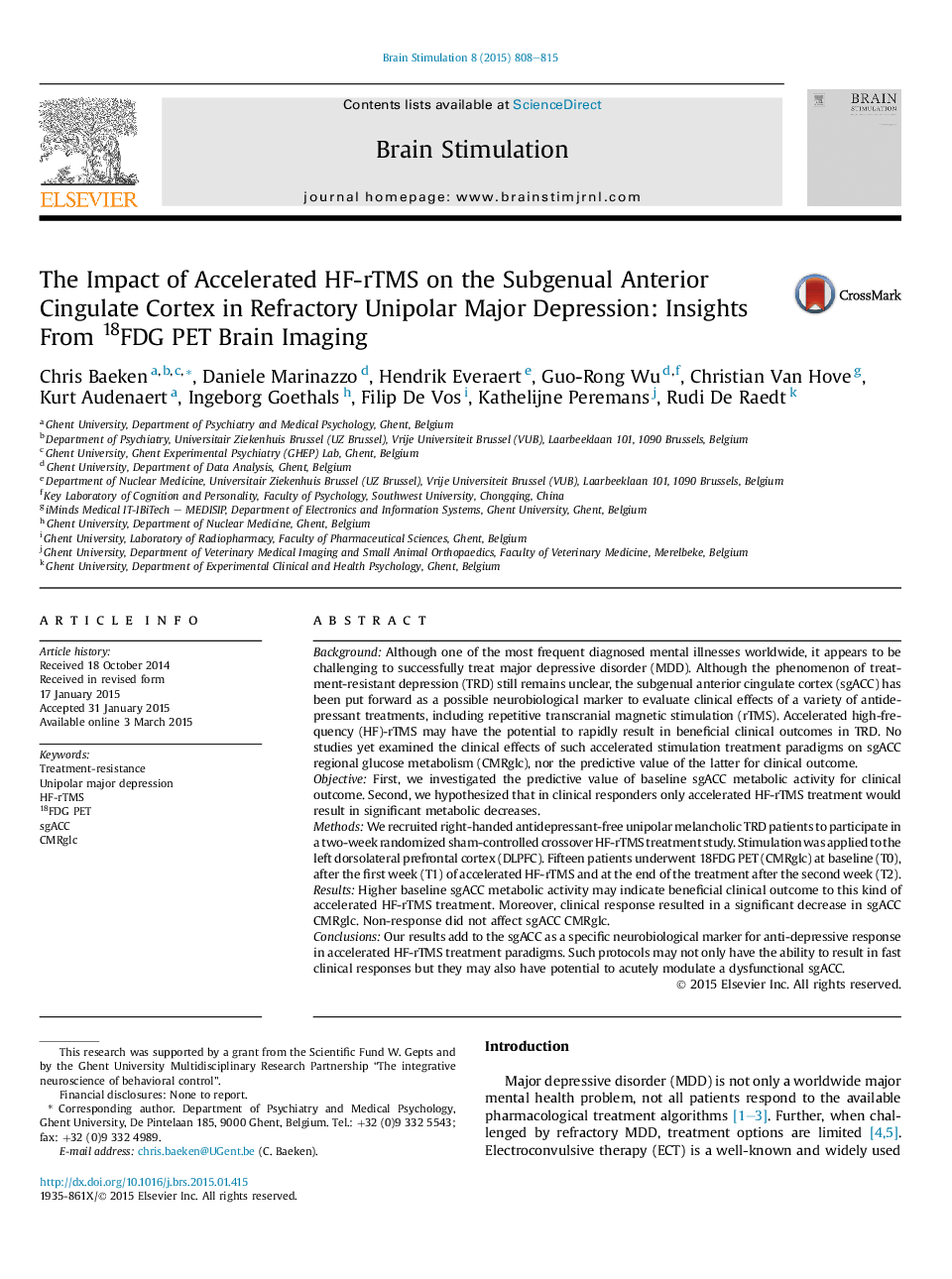| کد مقاله | کد نشریه | سال انتشار | مقاله انگلیسی | نسخه تمام متن |
|---|---|---|---|---|
| 6005260 | 1184661 | 2015 | 8 صفحه PDF | دانلود رایگان |

- Higher baseline sgACC CMRglc indicates beneficial outcome to accelerated HF-rTMS.
- Clinical response results in a significant decrease in sgACC metabolic activity.
- The sgACC may be a specific neurobiological marker for anti-depressive response.
BackgroundAlthough one of the most frequent diagnosed mental illnesses worldwide, it appears to be challenging to successfully treat major depressive disorder (MDD). Although the phenomenon of treatment-resistant depression (TRD) still remains unclear, the subgenual anterior cingulate cortex (sgACC) has been put forward as a possible neurobiological marker to evaluate clinical effects of a variety of antidepressant treatments, including repetitive transcranial magnetic stimulation (rTMS). Accelerated high-frequency (HF)-rTMS may have the potential to rapidly result in beneficial clinical outcomes in TRD. No studies yet examined the clinical effects of such accelerated stimulation treatment paradigms on sgACC regional glucose metabolism (CMRglc), nor the predictive value of the latter for clinical outcome.ObjectiveFirst, we investigated the predictive value of baseline sgACC metabolic activity for clinical outcome. Second, we hypothesized that in clinical responders only accelerated HF-rTMS treatment would result in significant metabolic decreases.MethodsWe recruited right-handed antidepressant-free unipolar melancholic TRD patients to participate in a two-week randomized sham-controlled crossover HF-rTMS treatment study. Stimulation was applied to the left dorsolateral prefrontal cortex (DLPFC). Fifteen patients underwent 18FDG PET (CMRglc) at baseline (T0), after the first week (T1) of accelerated HF-rTMS and at the end of the treatment after the second week (T2).ResultsHigher baseline sgACC metabolic activity may indicate beneficial clinical outcome to this kind of accelerated HF-rTMS treatment. Moreover, clinical response resulted in a significant decrease in sgACC CMRglc. Non-response did not affect sgACC CMRglc.ConclusionsOur results add to the sgACC as a specific neurobiological marker for anti-depressive response in accelerated HF-rTMS treatment paradigms. Such protocols may not only have the ability to result in fast clinical responses but they may also have potential to acutely modulate a dysfunctional sgACC.
Journal: Brain Stimulation - Volume 8, Issue 4, JulyâAugust 2015, Pages 808-815